Each equestrian discipline has its own specific requirements. But how to define the appropriate type of training that can develop a horse to achieve results without compromising its health.
We had the opportunity for a short interview with Nuno José Rodrigues Avelar (Professional dressage Grand Prix rider & trainer; Rider of Portuguese National WE team, gold and bronze medals in European and World Championships, Trainer of Danish World Champion WE Team (2016); Trainer German World Champion WE Team, winner of World Cup, nunoavelar.com) to gain his insights into the differences in the daily training structure for horses in both Dressage and Working Equitation. He has been using the Equestic SaddelClip for a long time and has a systematic and based on the factual data view.

As an intro, could you please tell what the main difference in horse type for Dressage and Working Equitation disciplines is? What criteria do you use to select horses for one or the other sport?
Nuno: For Dressage, we need horses with super quality movements to fit in a 60×20 arena (Warmbloods are the better ones). In Working Equitation (WE) we need more the collection, agility and bravery of the horse (Lusitano or Luso/Arabian are the better ones).
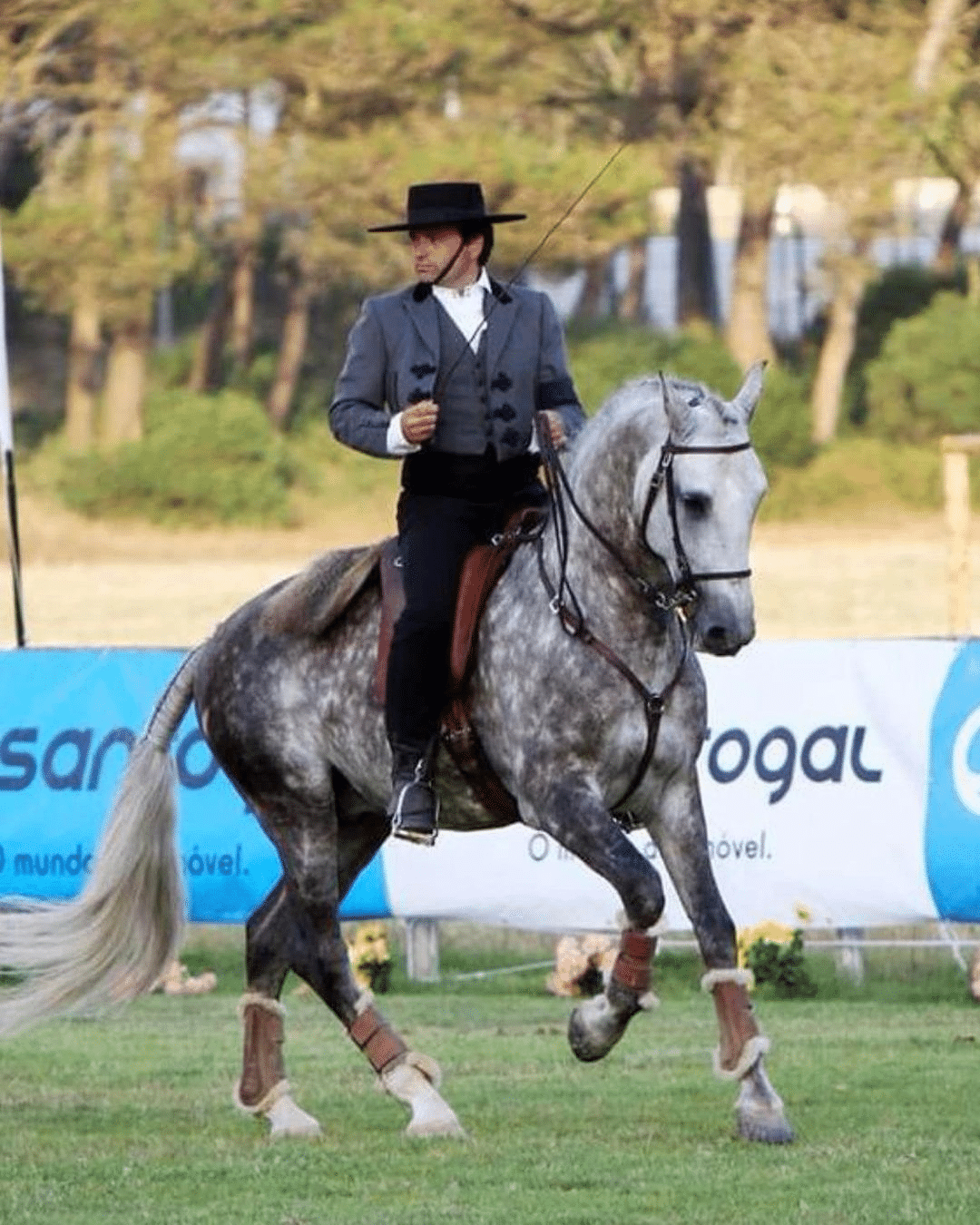
In both disciplines, horses need to be true athletes to make the high level exercises look easy.
For Dressage, I search for a super walk, a good trot and gallop with a good uphill born talent horse – it’s very important to see how they use its top line.
For WE I like to see how they walk and how they gallop on small circles, also if they are “chickens“ or brave to scary and colorful things around.
Have you ever transitioned horses from Dressage to Working Equitation or vice versa?
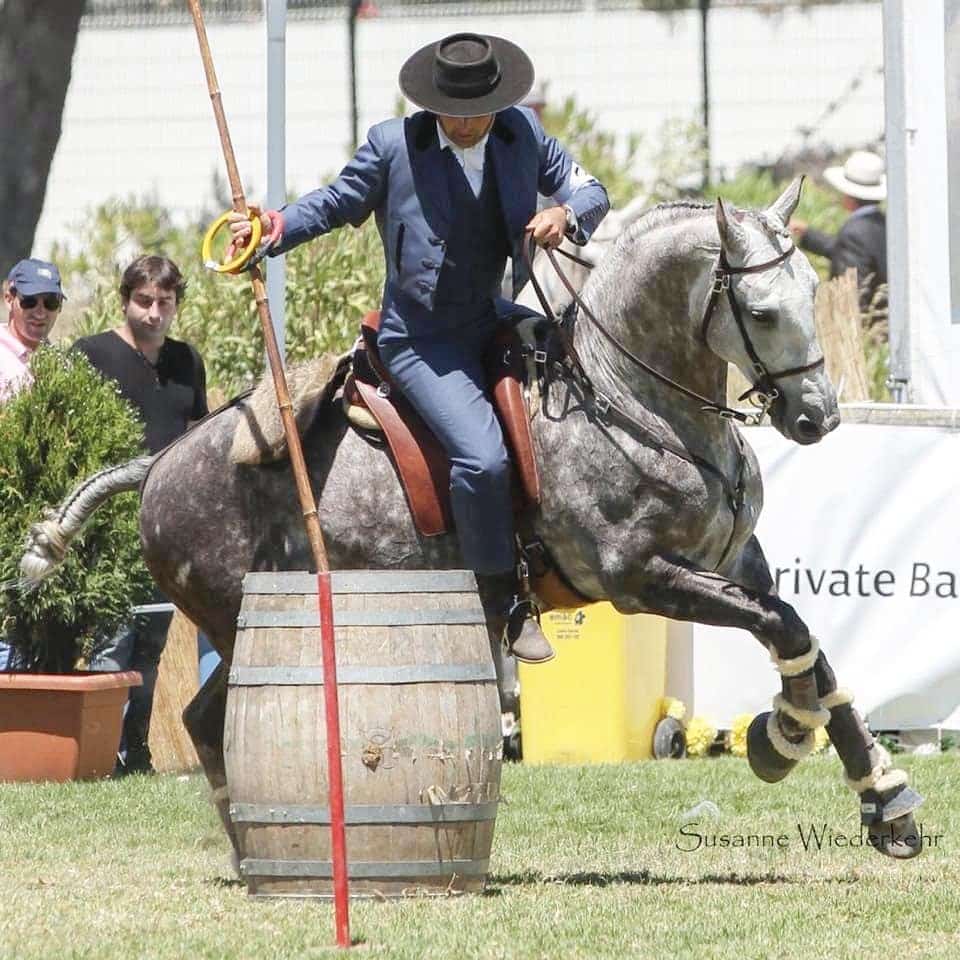
Nuno: Yes I have done it with several horses. The Dressage horses benefit a lot from the good WE cultures and techniques. The WE benefit from the correct and appropriate riding that they bring from Dressage.
Everything can be cultivated and we must adapt it according to each horse’s needs and gaps.
How do you structure the training for a Dressage horse compared to a Working Equitation horse?
Nuno: In all disciplines, it’s important to have good and healthy fitness of the horse for a good result.
For Dressage, I train the exercises I need, and one day a week I train enduro / basics but I make them work and get a bit sweaty.
For WE we have 3 disciplines* (dressage test, ease of handling an obstacle course, speed trail) and I do it according to each horse. When I have a hot horse, I train speed only once a month . If it’s soft, I train more often. If it’s not good at trail, I train trail more often. The training is similar to a 3-day eventing horse.
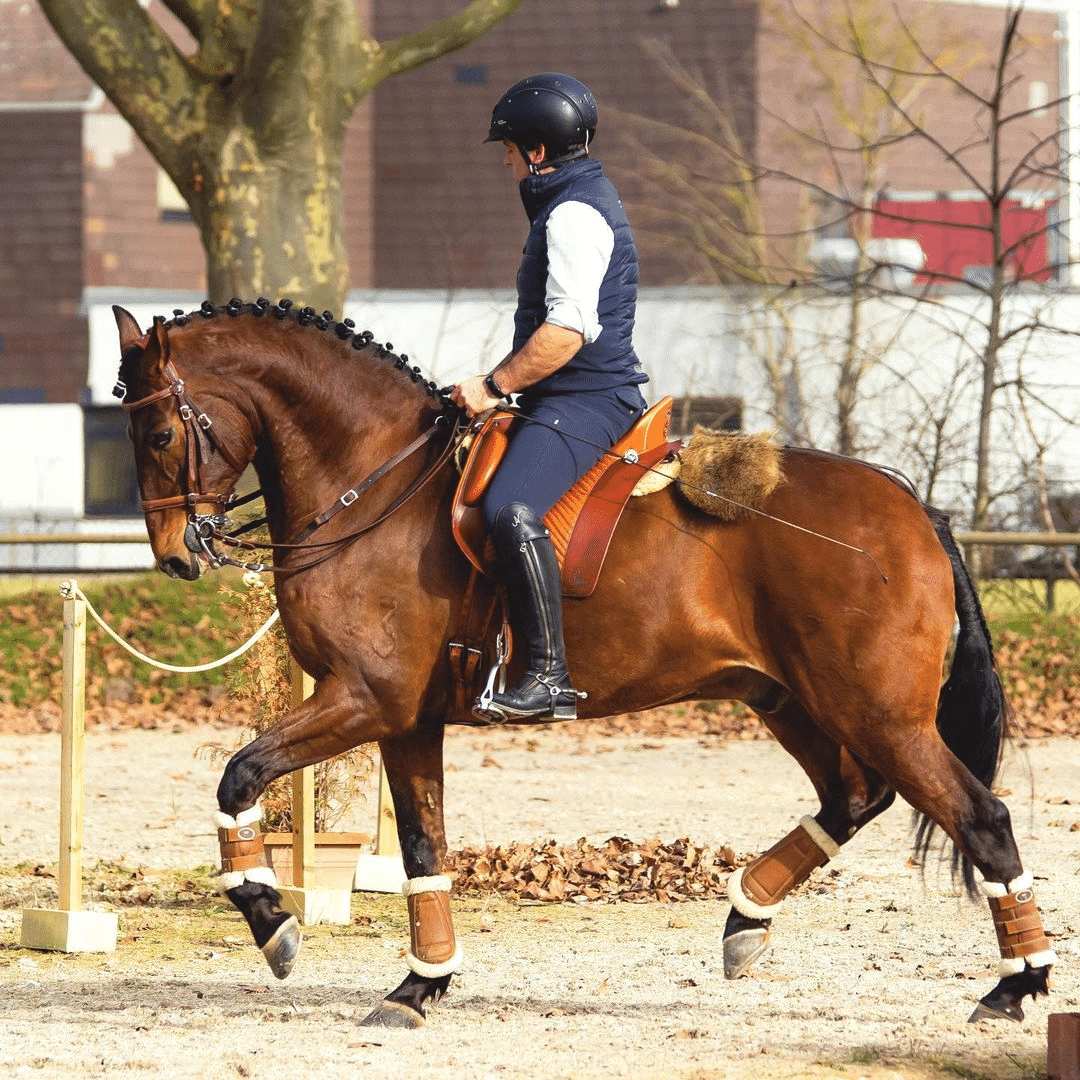
How does the typical training structure differ in Dressage and WE when there are no obstacles involved?
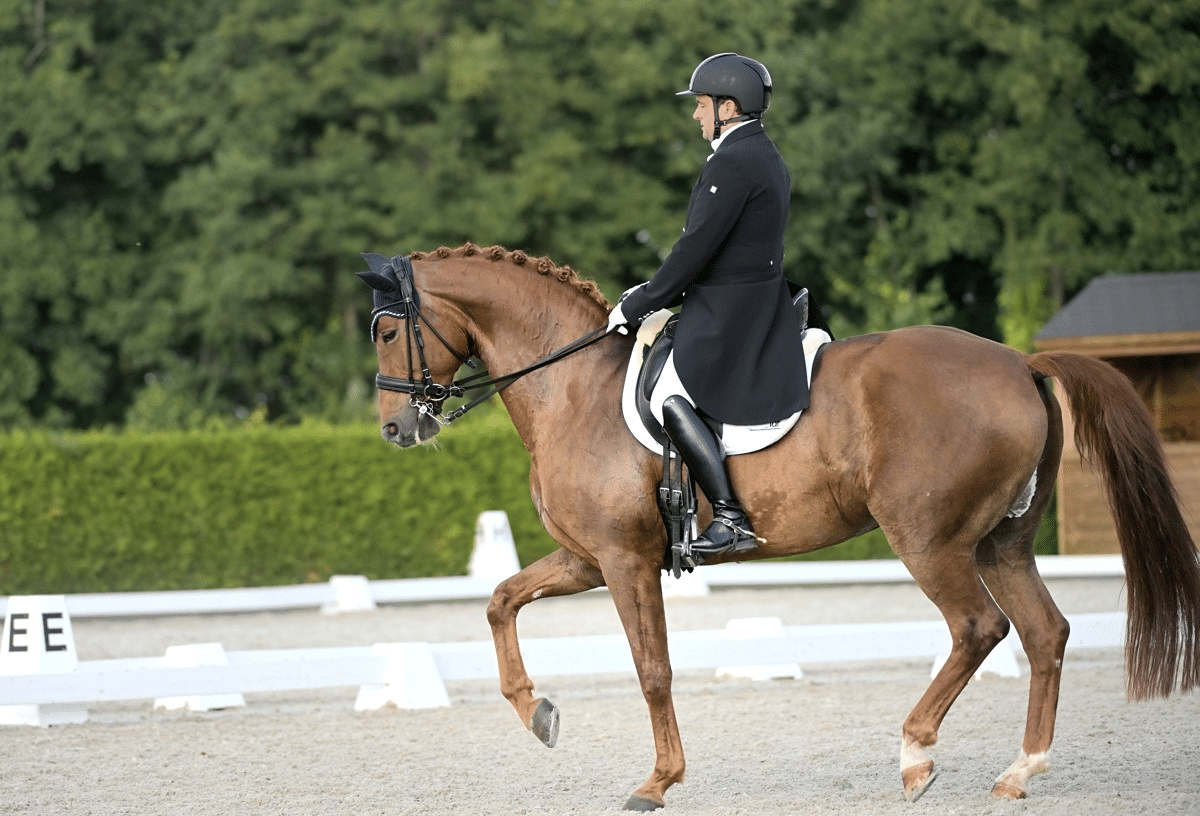
Nuno: In both, I always control to have very similar left / right training. In Dressage (as you can see on the Equestic charts below), I do much more trot than in WE training where we are cantering a lot. The rhythm, bounce etc. is different but I believe it’s because of the breed of the horse (Warmbloods vs. Lusitano).

Equestic charts of two horses: Dressage and Working Equitation. You can see more than 40% of time for canter and just about 10% for Trot in Working Equitation training. While a Dressage horse was getting twice less share as just about 20% for a canter time and distinct focus on a trot with 25-30% time allocation.
Nuno: It’s important to see it in a long term perspective, what is happening with a horse. Bounce of the back on the movements. How much walk/trot/gallop steps per minute etc.
What about the quality of a canter?
Nuno, here the question immediately arises about the quality of the canter… We know that in a WE Speed Trail it’s important to have a canter with a different impulse and rhythm than in Dressage (sport). But in WE we also have a dressage test. What type of canter in this test will be valued? Is it the same as in “sport” Dressage or different?
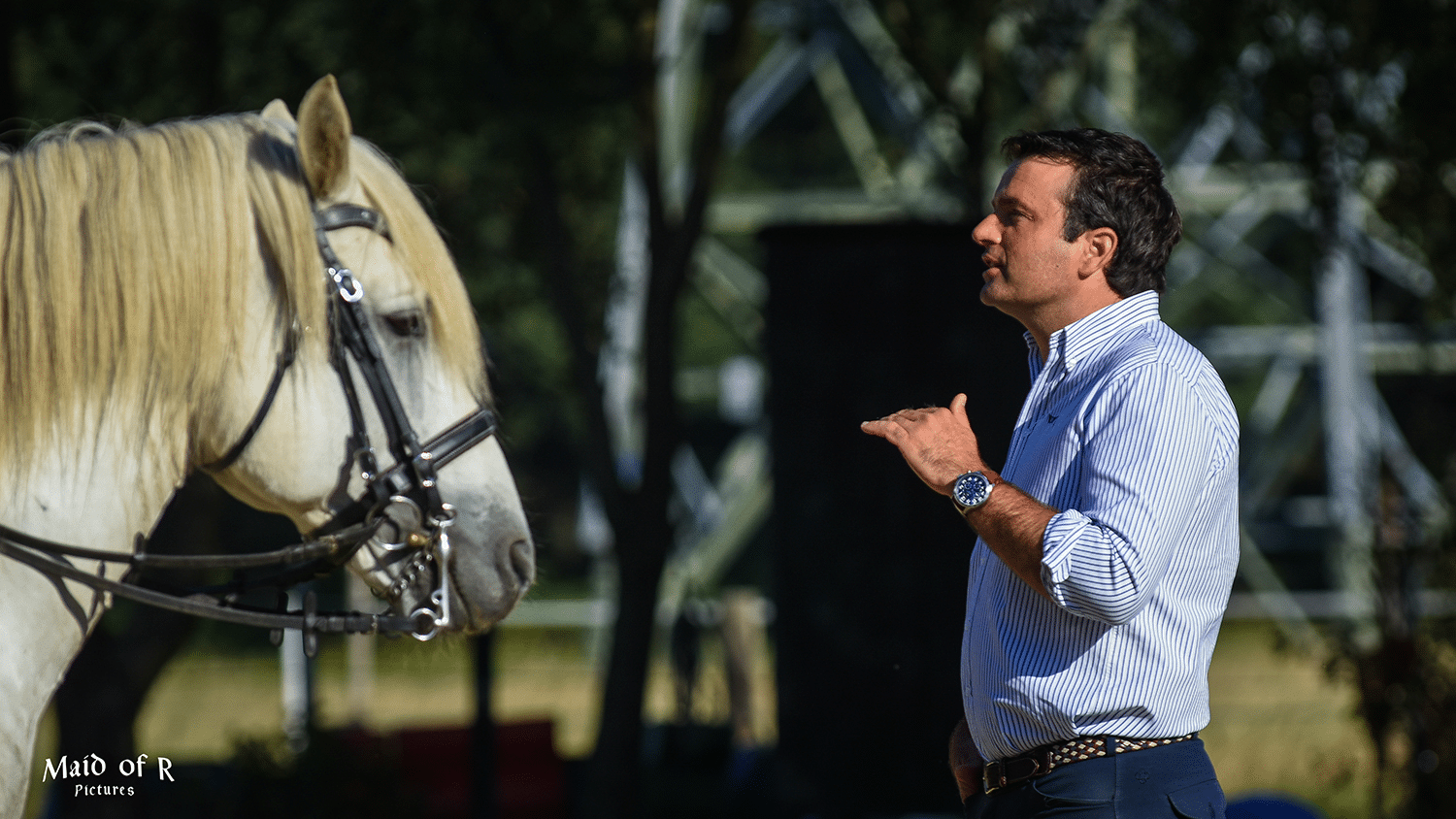
Photo by Maid of R Pictures
Nuno: Quality gallop is quality gallop, as FEI designed gallop. The little difference is that in WE Dressage test: transitions can be a little quicker – making it more “spicy”.
Summary
Summarizing, the structure of a horse training should align with the training goals. Each time we put our foot in the stirrup, we should already know what we will be teaching the horse that day and what workload it will receive. This includes measuring the duration of a walk, trot, and canter, as well as deciding what exercises do or what obstacles to include in the training session.
We extend our heartfelt gratitude to Nuno for graciously imparting his invaluable experience. May his unwavering passion and expertise continue to guide him towards triumph in both disciplines!








